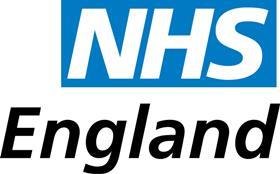Integrated care is not just a structural job but requires closer collaboration to build proactive services that prevent illness, says Michael Macdonnell
In association with

Every year the NHS adopts new lifesaving treatments and technologies. But the way it delivers care also needs to evolve.
To take just one example, this year we are rolling out mechanical thrombectomy where, by inserting a small piece of wire mesh into the groin, surgeons can dislodge a blockage in the arteries of the brain.
Need for integrated care
Evolving this “delivery model” has become necessary now that chronic conditions like depression or hypertension are the NHS’s central task. There are already 15 million people with chronic conditions and there will be three million more by 2025.
One in four of us will experience mental health problems and managing these conditions requires more than a trip to the GP or hospital, which is why the aim over the next several years is to make a concerted move towards integrated care.
If you forget all the acronyms for a moment, this is the objective: to stimulate systems or networks of integrated care, not just organisations. This is in part to join up services. But in addition, we need to develop proactive services that prevent illness or, failing that, prevent acute deterioration. The job of integrated systems is to get upstream.
We need to develop proactive services that prevent illness or, failing that, prevent acute deterioration. The job of integrated systems is to get upstream
This is already happening in the vanguard areas across the country. In Blackpool, so called “extensivist” teams proactively help people most at risk of becoming acutely ill, providing continuity whether they are on a ward or at home.
In Wakefield, multidisciplinary teams work closely with primary care to prevent acute deterioration amongst residents of their 27 care homes and six supported living facilities.
The results?
Emergency hospitalisations per person in our most integrated geographies are now growing at under half the rate of the rest of the country. The challenge now is to spread these successful vanguards through the NHS.
More than a structural change
Integration is not a structural job. It’s about people working across organisational boundaries, in combined teams, with interoperable technology to grease the wheels of collaboration.
It’s also about taking a “population health” perspective. In other words, analysing the needs of a population and redesigning care to better meet them.
Now, for the acronyms.
Sustainability and transformation partnerships are vehicles for collaboration, for systems acting as more than the sum of their parts. Accountable care systems go further, requiring NHS bodies and local government to take collective responsibility for improving the health of their residents working within a defined “population budget”.
Integration is about taking a “population health” perspective. In other words, analysing the needs of a population and redesigning care to better meet them
Taking this idea seriously means preventing illness, not just treating it, and investing in primary, mental health and community services that keep people out of hospital.
Of course, there are headwinds. Despite some additional money in the budget, these are amongst the most financially straitened times in NHS history. There are serious workforce pressures. But even if we had all the money and staff we wanted, would we reinforce an anachronistic delivery model?
This column is the first in a series that will share learning from our most mature systems. In the next one, I’ll describe how ACSs are developing their model of primary care – the cornerstone of integrated, proactive systems.





























No comments yet